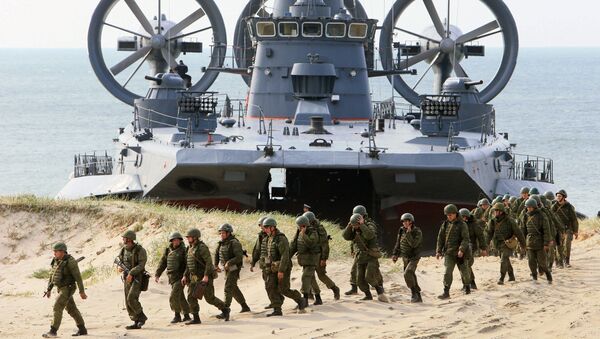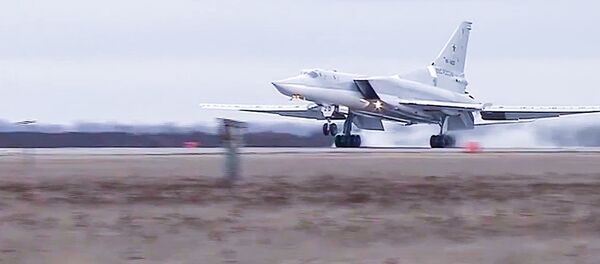With the success of its operation in Syria, the Russian military has proven it is more powerful than the West used to think, analysts said.
On Monday, exercises of the Russian Black Sea Fleet and the Caspian Flotilla kicked off in Crimea, as part of a snap combat readiness check.
Military analysts noted that Russian President Vladimir Putin has managed not only to effectively modernize the Russian military but also to show off its capability in the Syrian operation.
Numerous military drills Russia has held recently contributed to this success.
In January, the Central Military District also held drills aimed at boosting personnel’s capabilities in the event of information and psychological war.
Meanwhile, the Western Military District held large-scale exercises, including simulated hacker attacks on communication networks.
In early-February, drills with the use of Iskander-M missile systems kicked off in the Republic of Buryatia.
In addition, the Northern Fleet held drills which involved the Rassvet missile ship and Vice Admiral Kulakov destroyer.
A combat readiness check was also organized for the Arctic brigade of the Russian Armed Forces. Units of the Artic motorized infantry brigade of the Northern Fleet practiced locating and destroying infiltrators and terrorists.
In Northern Ural, the Central Military District held helicopter drills. The Southern Military District conducted exercises in Crimea and in the Kuban Region. They involved over 1,500 personnel and 350 pieces of military equipment.
On February 3, counterterrorist drills started in the Kuril Islands.
The Russian Air Defense forces staged drills in Abkhazia. On February 5, the Defense Ministry carried out simulated launches of Topol and Topol-M missiles. On February 8, Defense Minister Sergei Shoigu ordered to check combat readiness in air force and air defense units of the Southern Military District.
According to the Defense Ministry, military drills usually culminate in large-scale maneuvers, involving tens of thousands of troops and thousands of pieces of military hardware. They are aimed to check the commanding capabilities of the Russian Armed Forces as well as to practice modern combat tactics.
In 2015, Russia staged snap combat readiness checks in all military districts. A total of over 150,000 troops and over 1,000 pieces of military equipment were involved.
The Northern Fleet was put on full combat alert by the order of President Vladimir Putin.
In February 2015, a snap combat readiness check was held in the Pacific Fleet in the Kamchatka Region, involving nuclear-powered submarines, small missile destroyers and aircraft.
In September 2015, the Russian military staged the Center-2015 large-scale military and command drills in the Central and Southern Military Districts.
In October, missile boats of the Black Sea Fleet and coastal troops fired missiles at a surface target off the Crimean coast.
In autumn, Arctic motorized infantry forces held drills to protect the infrastructure on the Novaya Zemlya archipelago.
Joint international exercises also play a major role in enhancing the capabilities of the Russian military.
In 2015, Russia and Egypt held their first ever naval drills – the Bridge of Friendship. In 2015, Russia also held joint drills with Mongolia, Belarus and India.
On August 23-28, Cooperation-2015, a joint CSTO exercise, was staged in Russia’s Pskov Region. During the exercise troops practiced a joint operation to stem an armed conflict and preserve the sovereignty of a simulated CSTO country member.
In addition, in autumn 2015 Russia and Serbia held the Slavic Brotherhood joint drills, practicing an operation to destroy a training center of a simulated militant group.
Russia and Belarus held the Union Shield 2015 exercises that involved over 8,000 personnel from both countries, over 400 pieces of military equipment and weapons as well as nearly 80 aircraft and helicopters.
One of the first results of the reform was demonstrated during the Russian military operation in Syria. According to US experts, the Russian military has once again proved it is more effective and mobile than the West used to think.
Foreign experts seem to be surprised by the might and capability of the Russian Military, noting that Syria has only "allowed it to showcase its progress in the world," Business Insider reported.
It posted a video summarizing Russia’s success in Syria. Business Insider noted the state-of-the-art equipment Moscow is using in its air campaign.
According to Defense Minister Shoigu, the Russian military has moved to a new level. In 2015, the number of contract soldiers topped the number of conscripts, for the first time in history. What is more, the Russian Armed Forces have been re-equipped with modern weapons by 50 percent.
Earlier, NATO General Hans-Lothar Domrose said that the global balance of power shifted toward Russia. According to him, this was prompted by the latest technical developments in the Russian Armed Forces.
"Ever since Putin became president for the second time, Russia has actively invested in developing its armed forces, making them highly sophisticated, mobile and effective, not to mention numerous," NATO General Hans-Lothar Domrose told Contra Magazin.



